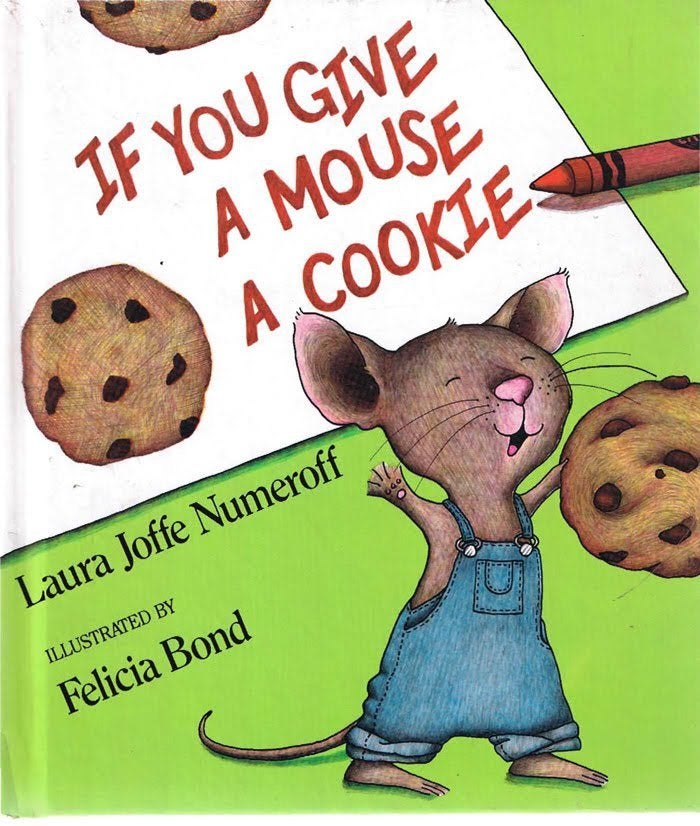This month's Book Nook topic is...
Explaining Why Things Happen with If You Give a Mouse a Cookie

To truly understand a story, children need to do more than just recognize the words written in the text. Reading comprehension is about understanding the overall meaning of a story, including reading between the lines to understand a story’s overall message.
Discussing why things happen in a book is a great way to encourage your child to think about the story and deepen her understanding. This could mean talking about characters’ emotions or motivations, and talking about cause and effect – how one event leads to another. The better your child understands the stories she hears, the easier it will be for her to read and write stories on her own later.
Let’s get started!
The Book:
If You Give a Mouse a Cookie by Laura Joffe Numeroff, Illustrated by Felicia Bond
Why we picked it
This story is about a boy who offers a mouse a cookie, which leads the mouse to make many more requests from the boy. The story provides many opportunities to talk about why the characters do the things they do and the thoughts and emotions that might be motivating their actions.
Building understanding in the first reading
When you read this story for the first time, it’s best to keep the story moving and have very short conversations that help your child remember the main characters, their actions, and what the main problem is. For example, you could make comments like:
- “I don’t think the boy expected the mouse to want to do so much when he have him the cookie.”
- “Oh wow – the mouse didn’t want to nap at all!”
Incorporating explanations in later readings
Once your child has grasped the basic story, she’ll be able to think about it in different ways and have longer conversations that deepen her understanding. Being encouraged to explain something also prepares preschool children for the demands of school, where they are often asked “Why?”.
You can encourage your child to think about why things happen by using these two strategies:
- Making “thinking-out-loud” comments
- Asking questions that encourage explanations
Making “thinking-out-loud comments”
“Thinking-out-loud” comments show your child how you are thinking about the story and trying to figure out things that are not actually stated in the book. By making these types of comments, you’re modelling a way for your child to express her own thoughts and ideas. For example, you could say:
- “I’m wondering why the boy wanted to give the mouse a cookie.”
- “I’m thinking that mouse has a lot of energy because he did not take a nap.”
- “I think the boy is feeling exhausted because the mouse keeps him very busy.”
Asking questions that encourage explanations
Another way to deepen your child’s understanding of why things happen is to ask questions that go beyond what is written on the page and shown in the illustrations. These questions encourage your child to use her knowledge and reasoning skills. For example:
- “Why do you think the boy gave the mouse a cookie?
- “Why do you think the mouse wants to put his picture on the fridge?”
- “Why do you think the boy is so tired at the end of the book?”
The more times you read the story, the more you’ll be able to make “thinking-out-loud” comments and ask questions that deepen your child’s understanding of the story. As you engage your child in conversations that encourage her to think more deeply about a book, you’re helping to develop the comprehension skills she’ll need to read successfully on her own.
Happy reading!
More Resources
The strategies in this Book Nook post are drawn from Hanen’s practical, research-based guidebooks for building emergent literacy. Explore the links below to learn more about how these guidebooks can support you.
For Parents I'm Ready! guidebook
I'm Ready! guidebook
For Educators ABC and Beyond guidebook
ABC and Beyond guidebook
